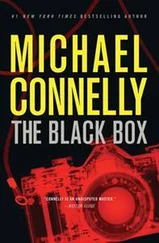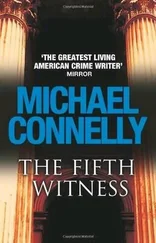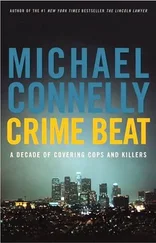Still, Bosch thought, a psychological study could have been useful for understanding the defendant and his crimes. It should have been done. Whether the subject was cooperative or not, a profile could have been drawn from the crimes themselves as well as from what was known about Waits through his history, appearance, the findings in his apartment and interviews conducted with those he knew and worked for. Such a profile might have also been useful to O’Shea as an edge against a move by the defense to claim insanity.
Now it was too late. The department had a small psych staff and there would be no way for Bosch to get anything done before the interview with Waits the next day. And farming a request out to the FBI would result in a two-month wait at best.
Bosch suddenly had an idea about that but decided to grind it over for a little while before acting on anything. He put the questions aside for the moment and got up to refill his coffee mug. He was using a real coffee mug he had brought down from the Open-Unsolved Unit because he preferred it over Styrofoam. His mug had come from a famous writer and television producer named Stephen Cannell who had spent time with the OU Unit while researching a project. Printed on the side of the mug was Cannell’s favorite piece of writing advice. It said What’s the bad guy up to? Bosch liked it because he thought it was a good question for a real detective to always be considering as well.
He came back to the cafeteria table and looked at the last file. It was thin and the oldest of the three. He put aside thoughts of Echo Park and psychological profiles, sat down and opened the file. It involved the reports and investigation related to Waits’s arrest in February 1993 for prowling. It was the only blip on the radar involving Waits until his arrest in the van with the body parts thirteen years later.
The reports said Waits was arrested in the backyard of a home in the Fairfax District after a neighbor with insomnia happened to look out her window while walking through her dark house. She saw a man looking in the rear windows of the house next door. The woman woke her sleeping husband and he promptly snuck out of the house, jumped the man and held him until police arrived. The man was found in possession of a screwdriver and charged with prowling. He carried no identification and gave the name Robert Saxon to the arresting officers. He said he was only seventeen. But his ruse crumbled and he was identified as Raynard Waits, twenty-one, a short time later when a thumbprint taken during the booking process scored a match in DMV records to a driver’s license issued nine months earlier to Raynard Waits. That license carried the same day and month of birth with one change. It said Raynard Waits was four years older than he had claimed to be as Robert Saxon.
Once identified, Waits admitted to police during questioning that he had been looking for a home to burglarize. However, it was noted in the report that the window he had been seen looking through corresponded to the bedroom of a fifteen- year-old girl who lived in the house. Still, Waits avoided any sort of sex offender jacket in a plea agreement negotiated by his attorney, Mickey Haller. He was sentenced to eighteen months’ probation, which, according to the reports, he completed with high marks and no violations.
Bosch realized that the incident was an early warning of what was to come. But the system was too overburdened and inefficient to recognize the danger that was in Waits. He worked the dates and realized that while Waits was successfully completing probation in the eyes of the justice system, he was also graduating from prowler to murderer. Marie Gesto was taken before he cleared his tail.
“Howzit going?”
Bosch looked up and quickly took off his glasses so he could focus on distance. Rider had come down to get coffee. She was holding an empty What’s the bad guy up to? mug. The writer had given one to everybody in the squad.
“Almost done,” he said. “How about you?”
“I’m done with what O’Shea gave us. I called Evidence Archives for the box on Fitzpatrick.”
“What’s in there?”
“I don’t know for sure but the inventory in the book just lists the contents as pawn records. That’s why I’m having it pulled. And while I’m waiting I’m going to finish up on Matarese and have it ready to walk over tomorrow. Depending on when we get to talk to Waits, I’ll walk Matarese in either first thing or last thing. Did you eat lunch?”
“Forgot. What did you see in the Fitzpatrick file?”
She pulled out the chair opposite Bosch and sat down.
“The case was handled by the short-lived Riot Crimes Task Force, remember them?”
Bosch nodded.
“They had a clearance rate of like ten percent,” she said. “Basically, anybody who did anything during those three days got away with it unless they were caught on camera, like that kid who bricked the truck driver while a news chopper was right on top of him.”
Bosch remembered that there were more than fifty deaths during the three days of riots in 1992 and very few were ever solved or explained. It had been a free-for-all, a lawless time in the city. He remembered walking down the middle of Hollywood Boulevard and seeing flaming buildings on both sides of the street. One of those buildings probably contained Fitzpatrick’s pawnshop.
“It was an impossible task,” he said.
“I know,” Rider said. “Putting together cases out of that chaos. I can tell from the file on Fitzpatrick that they didn’t spend a lot of time with it. They worked the crime scene with a SWAT line guarding the place. The whole thing was pretty quickly written off as random violence, even when there was some stuff they should have routinely looked at.”
“Like what?”
“Well, for starters, Fitzpatrick looks like he was a straight arrow. He took thumbprints off of everybody who brought in stuff to pawn.”
“His edge against taking in stolen property.”
“Exactly. And what pawnbroker do you know of back then who voluntarily did that? He also kept an eighty-six list-customers who were persona non grata for various reasons and customers who complained or threatened him. Apparently it isn’t uncommon for people to come back in to buy back the property they’ve pawned, only to find they are past the holding period and it’s been sold. They get mad, sometimes they threaten the pawnbroker, and so on. Most of this came from a guy who worked for him in the store. He wasn’t there the night of the fire.”
“So, was the eighty-six list checked out?”
“It looks like they were going down the list when something happened. They stopped and wrote the case off as random violence associated with the riot. Fitzpatrick was set on fire with lighter fluid. Half the stores on the Boulevard that were burned down were started the same way. So they stopped spinning their wheels on it and went on to the next one. There were two guys on it. One’s retired and the other works Pacific. He’s a patrol sergeant now, p.m. watch. I left a message.”
Bosch knew he didn’t have to ask if Raynard Waits was a name on the 86 list. That would have been the first thing Rider said.
“You might have an easier time getting to the retired guy,” Bosch suggested. “Retired guys always want to talk.”
Rider nodded.
“That’s an idea,” she said.
“The other thing is Waits used an alias when he got popped in ’ninety-three on a prowling charge. Robert Saxon. I know you checked for Waits on the eighty-six list. You might want to check Saxon as well.”
“Got it.”
“Look, I know you have all of that going, but do you have time to do an AutoTrack run on Waits today?”
The division of labor in their partnership had her doing most of the computer work. AutoTrack was a computer database that could provide an individual’s address history through utility and cable hookups, DMV records and other sources. It was tremendously useful in tracing people back through time.
Читать дальше












